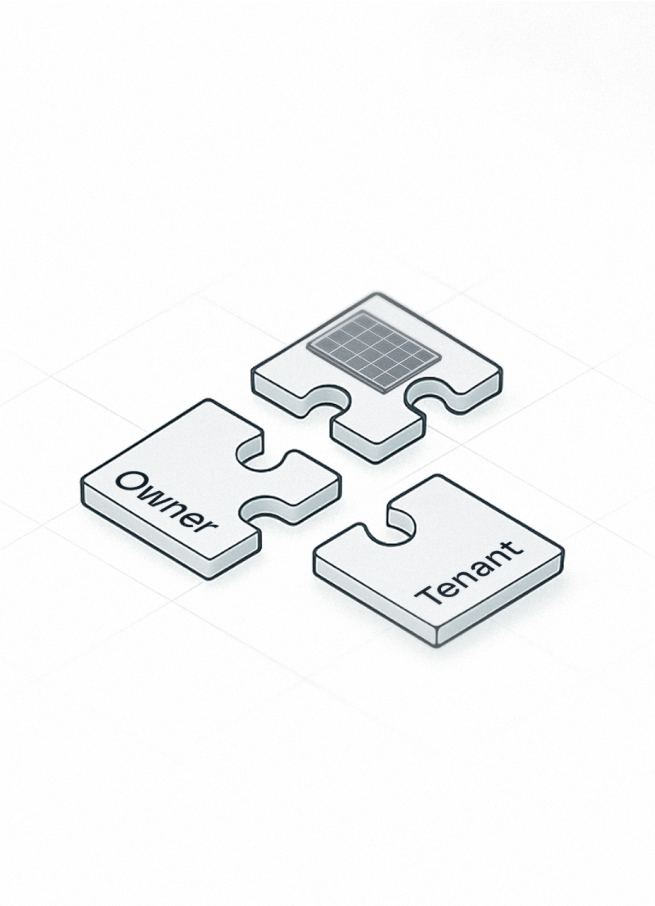VNEM 3.0 delivering High IRR for Multi-tenant properties in California
.png)
In the early days of Ivy Energy, before the company fully commercialized, real estate owners were often skeptical about the value proposition of investing in solar energy. The idea of sharing 5-10% of onsite solar value with tenants while retaining the rest to enhance Net Operating Income (NOI) seemed too good to be true. However, as the industry evolved, particularly during the tail end of VNEM 2.0, property owners saw Internal Rate of Returns (IRRs) soar above 40% for efficiently installed photovoltaic (PV) projects. Now, with the introduction of VNEM 3.0, skepticism has resurfaced. While rates have shifted and IRRs have changed, the program remains financially beneficial, and VNEM 3.0 continues to offer an attractive opportunity for multi-tenant solar investments.
The High IRR Drivers
Several factors contributed to the remarkable IRRs of VNEM 2.0:
- Declining PV Costs: Over the past decade, the cost of photovoltaic systems has significantly decreased, making solar installations more affordable.
- Rising Retail Energy Rates: Retail energy rates in California escalated from an average of 20 cents per kWh to the high 30s, enhancing the financial attractiveness of solar projects.
- High Compensation for Grid-Sold Energy: Energy tariffs allowed multi-tenant buildings to sell power back to the grid at high rates, further boosting the financial returns.
These factors combined to create a favorable environment for property owners, making solar investments under VNEM 2.0 highly lucrative. Those who capitalized on VNEM 2.0 enjoyed increased property values, significant savings to share with tenants, and IRRs of 30-40% on sustainability projects.
Transitioning to VNEM 3.0
The energy tariff was revised earlier in 2024, resulting in VNEM 3.0. While the compensation for exported energy virtually used by the distribution grid was lowered, the benefits of VNEM 3.0 remain compelling:
- Solid IRRs: VNEM 3.0 provides an IRR of 15-30%, depending on the efficiency of the PV installation, the property’s energy usage from 10 AM to 4 PM, and the integration of storage solutions. Ivy Energy’s sales team can help you model VNEM 3.0 benefits using in-house load modeling tools developed from their extensive data warehouse, which contains millions of real consumption values. These tools accurately forecast your building's predicted load. Additionally, Ivy’s billing and experience features for residents help maximize asset value by incentivizing behavioral or controllable loads during prime solar hours. This saves tenants money and maximizes PV asset value against VNEM 3.0 Time of Use (TOU) incentives.
- Sustainability Benefits: VNEM 3.0 offers substantial sustainability advantages, enabling properties to offset Scope 2 and 3 emissions. Additionally, tenant satisfaction improves with sustainability initiatives. According to a recent Ivy poll, 75% of respondents are willing to pay more for housing with green amenities, and 77% prefer solar power over other options.
- Increased Property Value: Investments in onsite energy under VNEM 3.0 can significantly enhance the resale market value of real estate assets starting in year one.
- Off-Balance Sheet Financing: VNEM 3.0 allows for cash flow with off-balance sheet financing, creating additional rental income opportunities even if direct investment in the infrastructure is not feasible. The Ivy team is happy to connect you with a financing partner that offers these types of programs.
Financial Viability Under VNEM 3.0: A Case Study
Despite initial skepticism about VNEM 3.0, the financial outcomes remain promising. Ivy Energy’s analysis of a typical multi-tenant property found that their solar investment over a 25-year period achieves a strong return.
A multi-tenant property in PG& E territory under VNEM 3.0 in this example can expect:
- New Annual NOI: $137,562 in year one, $458.54 Per Unit Annually
- Cumulative Cash Flow: Over 25 years, the cumulative cash flow can reach $1.1 million by year ten and $5.6 million by year 25.
- Payback Period: By year five, the sample property recouped the original investment cost and achieved a positive cumulative cash flow.
- 25 Year IRR: 28%
- Impressive Market Value Increase Projections: $2.7 million market value increase in year one, increasing to $7.8 million in year 25.
Assumptions:
- Total Units: 300
- System Size: 555 KW
- Gross Cost: $1,755,300
- Tenant Energy Usage Offset:68%
These figures highlight that VNEM 3.0, when approached strategically, is not only financially viable but also offers long-term benefits for property owners looking to enhance asset value and sustainability efforts.
Real-World Impact
To date, Ivy has enabled numerous properties to benefit from VNEM 2.0 that are now reaping the rewards. This includes some of the biggest REITs and multifamily property owners in the state, including AvalonBay Communities, whose Director of Asset Management had this to say about working with Ivy Energy to integrate solar energy into their multifamily properties:
“From the initial onboarding to the implementation phase, we have built a strong partnership with Ivy Energy. Their team’s expertise and dedication ensured a smooth and efficient transition to solar power at our properties. The support we received throughout the process was excellent, with Ivy Energy demonstrating a deep understanding of our needs and providing tailored solutions.”
A top Southern California commercial solar company, HES Renewables, has had dozens of projects benefit from its partnership with Ivy Energy. Company owner and CEO Ross Williams had this to say:
"Ivy Energy has cracked the code for property owners to effortlessly share the benefits of solar with tenants, while also delivering a compelling Net Operating Income proposition. We've successfully integrated Ivy’s billing platform across a range of clients, from one-off installations to our largest portfolio client, who immediately recognized the value and opted to include Ivy Energy billing on every subsequent multi-tenant project. While the end of NEM 2 has shifted the landscape, Ivy’s innovative approach continues to make commercial solar a strong ROI opportunity for both commercial and multi-family property owners across California."
Dozens of live properties, thousands of energized units, and millions in additional NOI highlight the success of this program. While VNEM 2.0 set a high benchmark, VNEM 3.0 continues to offer significant benefits for property owners.
So What Are You Waiting For?
VNEM 3.0 remains a robust program for multi-tenant buildings. Real estate owners and energy developers should focus on selling and investing in these projects to capitalize on the financial and environmental benefits. As VNEM 3.0 offers attractive IRRs, sustainability advantages, increased property resale market values, and innovative financing options, it stands as a viable and profitable path forward. Don’t miss out on the opportunities VNEM 3.0 presents while it is still available.
.png)




